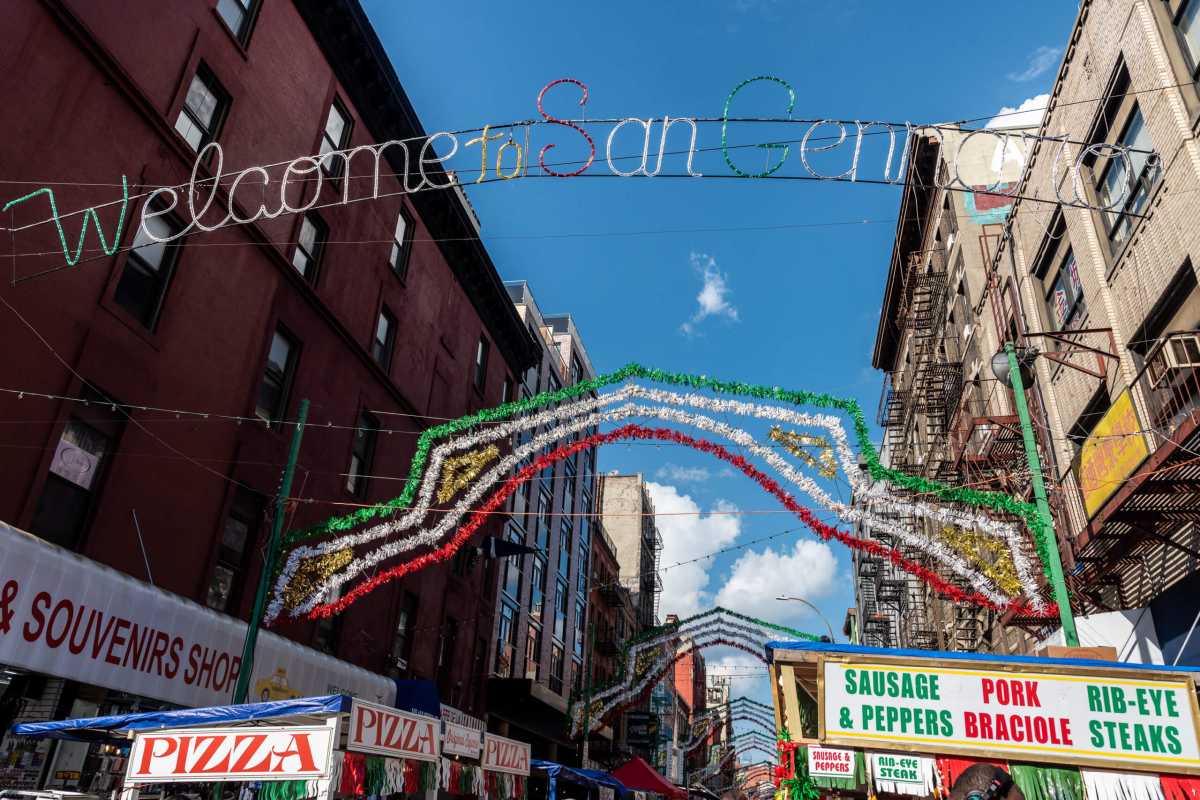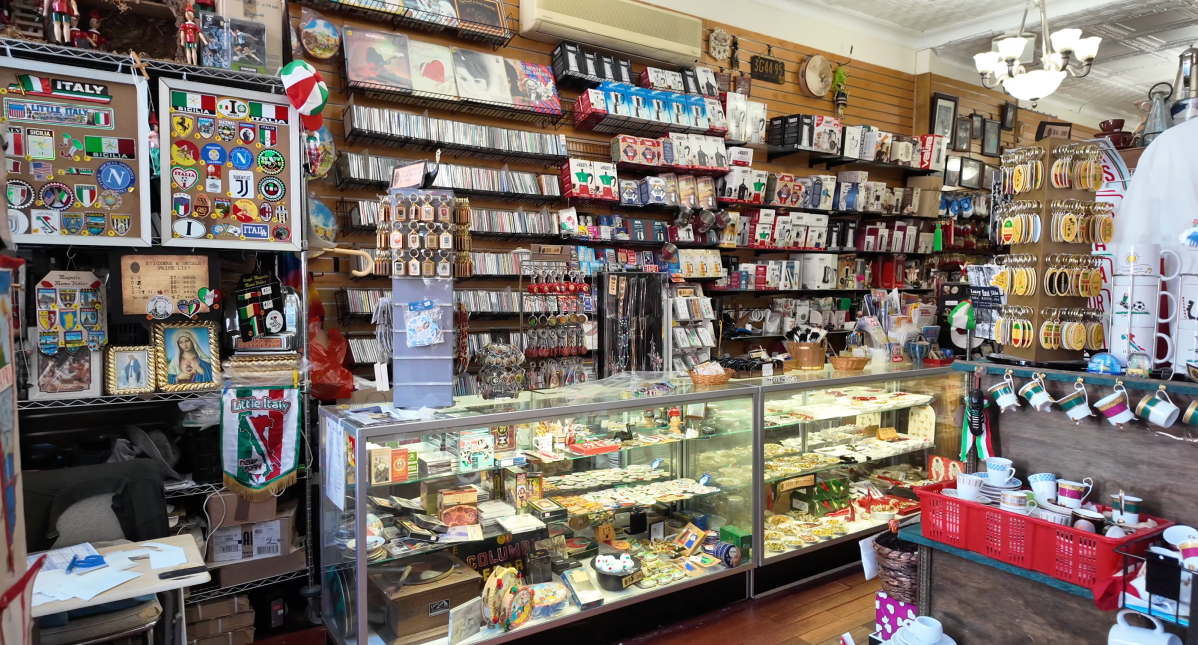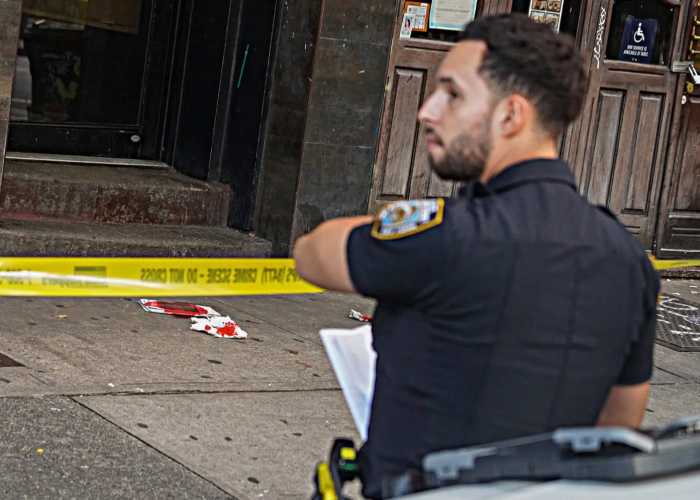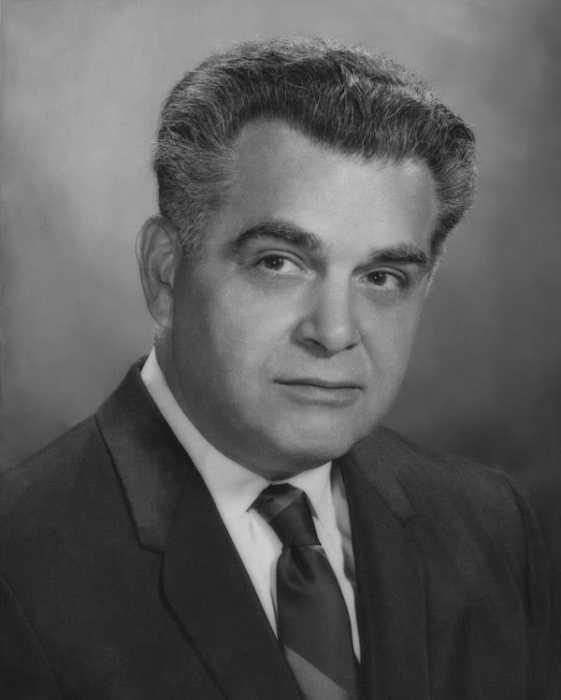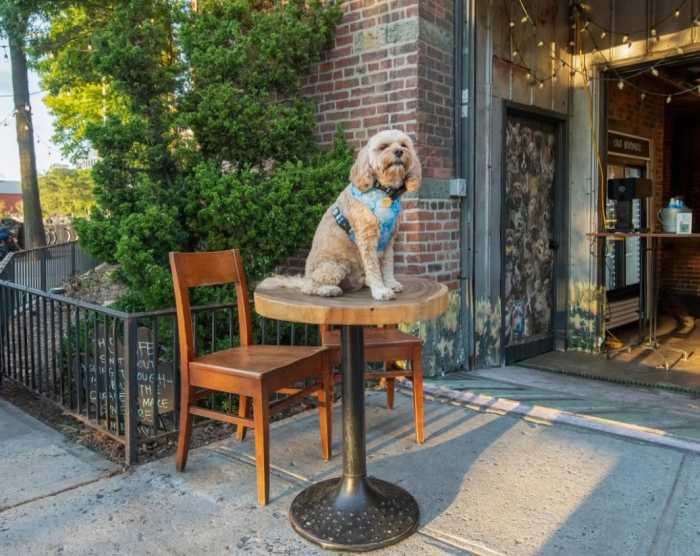Grab a zeppole or cannoli, it’s time to celebrate the Feast of San Gennaro in Little Italy. In its 98th year, the 11-day feast runs through Sept. 22 and don’t miss out on spotting these pieces of Italian American history.
Statue of San Gennaro
While you can fill up on gelato, pastries, pasta and listen to endless Italian music, there would be no celebration without San Gennaro. The statue of San Gennaro remains on display throughout the 11 day feast. It is normally inside the Church of the Most Precious Blood on Baxter Street, but is brought every year in a procession.
The roots of the feast go back to 1926 at a time when Little Italy stretched north to Houston Street and down past Worth Street from the Bowery to Broadway. Thousands of Italian immigrants filled the streets with each region settling on a different block. Many Naopleatians lived on Mulberry Street and would pray to the patron Saint of Naples, San Januarius (San Gennaro) to protect them in America.
The feast started off as a one day tribute to San Gennaro. As a way for people living on Mulberry Street to feel connected to their hometown, a group of cafe owners created a small chapel on the street with an image of San Gennaro. They invited people to donate money to the chapel and those donations were given to community members in need. The tradition has continued, but on a much larger scale.
Mulberry Street between Canal and Hester Streets
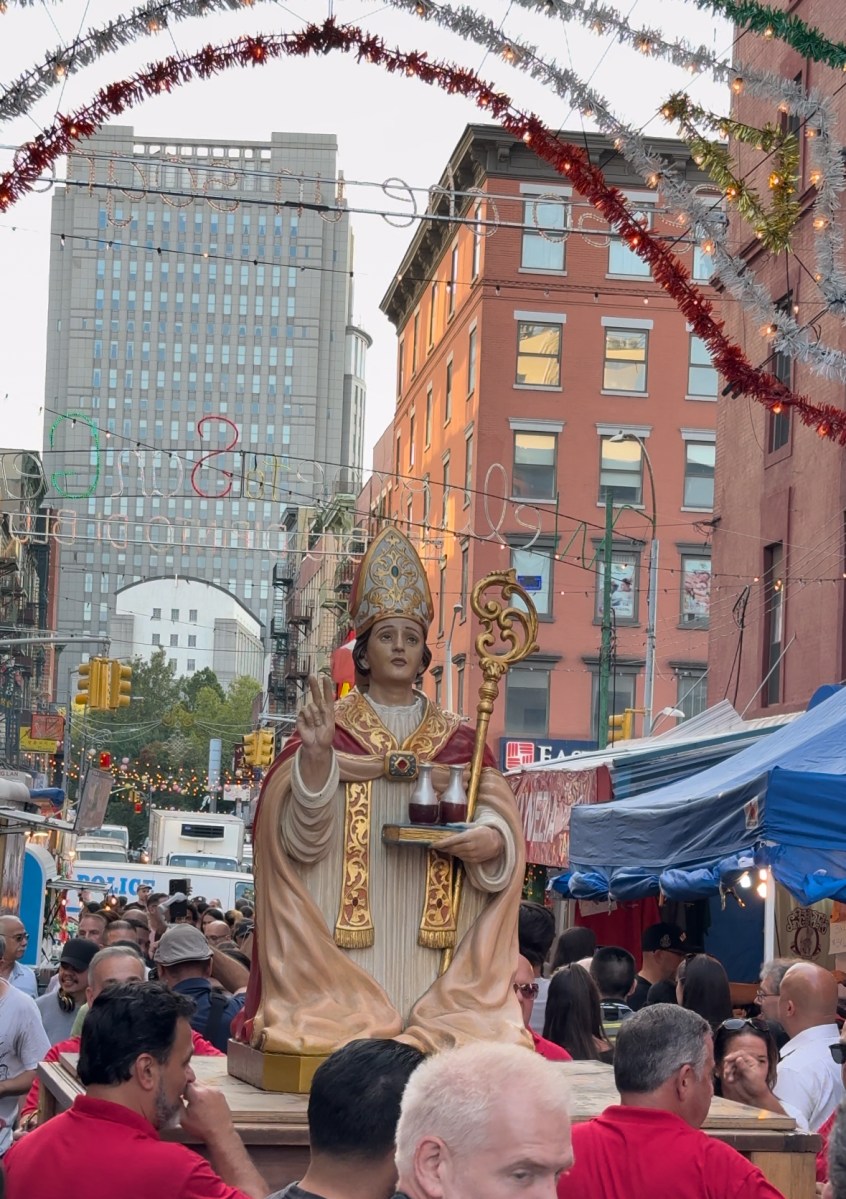
Church of the Most Precious Blood
Known as the National Shrine of San Gennaro, the Church of the Most Precious Blood was completed in 1904. It was a spot where many Neapoltains living on Mulberry Street would come and pray to San Gennaro.
While the church is not always open, there is a mass on September 19th in honor of San Gennaro’s feast day. Inside there are relics of the saint and the artwork is a sight to see. Italian immigrant and artist Donatus Buongiorno followed the Neapolitan Baroque style and created 30 religious oil paintings throughout the church, including above the main altar. Buongiorno was trained at the Royal Academy of Fine Arts in Naples in the late 1800s and created depictions of Saint Anthony and Saint Francis in honor of the Franciscan friars that ran the church for many decades.
113 Baxter Street
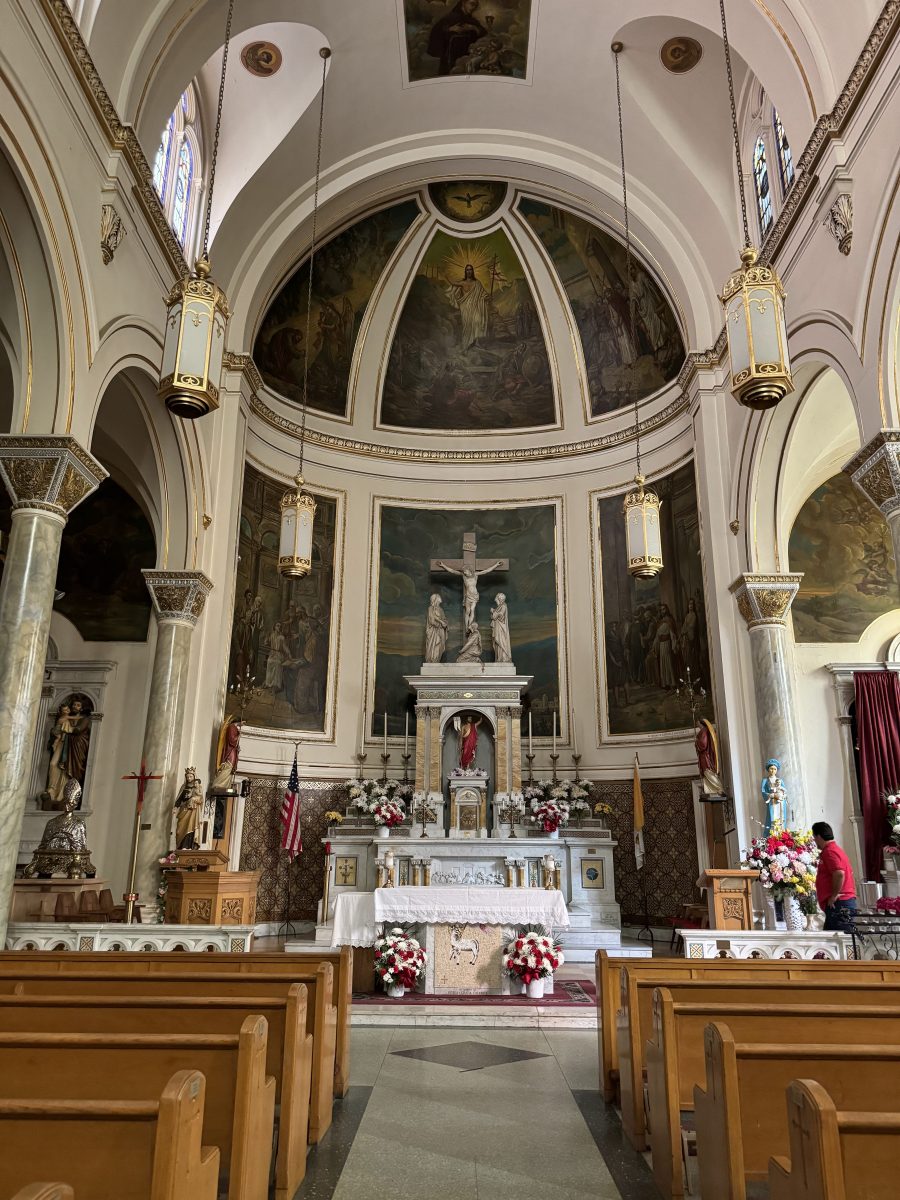
Vinny’s Nut House
The feast has evolved throughout the decades with different vendors year to year, but there is one that has become almost as famous as the feast itself. On the corner of Mulberry and Grand streets, Vinny’s Nut House is one of the oldest vendors at the feast. They serve up the Italian sweet treat known as torrone, which is a nougat made of egg whites, honey, vanilla, wafers and almonds. It was started by Antoniette Sabatino more than 75 years ago, but the person who made the stand legendary was her grandson Vincent “Vinny Peanuts” Sabatino.
For more than 50 years, he was not only a fixture at the feast, but an advocate for the community calling for affordable housing and preservation of the Little Italy district. Sabatino passed away in 2020 from Covid-19. Community and family members rallied to keep his legacy alive and renamed the corner where he sold torrone and peanuts for five decades “Vincent ‘Vinny Peanuts’ Sabatino Corner.” Vinny’s sister, Beatrice, and nephew, Danny, along with other family members now continue to sell the Italian made torrone at that corner.
Corner of Mulberry Street & Grand Street
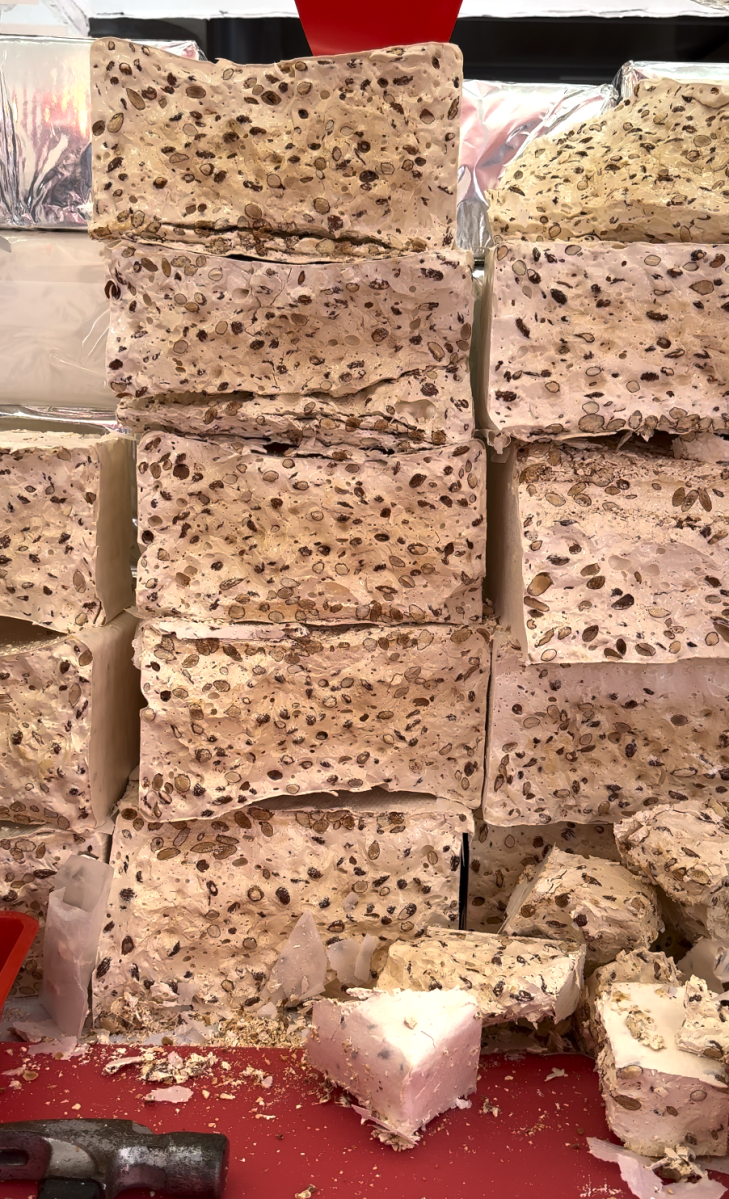
Caffe Roma
Did you even go to the feast if you did not have a cannoli? While there is no shortage of where to get one on Mulberry Street, one of the must try spots has been around for more than 130 years. Opened in 1891, Caffe Roma is known as the oldest Italian bakery in the city and is still family owned using the same recipes from day one. All of their pastries, including pignoli cookies, sfogliatella, Italian cheesecake and cannolis are still made in house. During the feast, Caffe Roma makes thousands of cannolis to satisfy the demand.
It is more than just a pastry, but you are taking a bite of New York history. The inside of Caffe Roma has largely remained the same since its early days. The green tin ceiling, the original cash register, the tile floor, photos of the long gone family members and massive pendulum clock, which is the centerpiece and still functions. The old world charm and nostalgia of Caffe Roma has grabbed the attention of TV show producers and even used it as a filming location in the final season of “The Sopranos.”
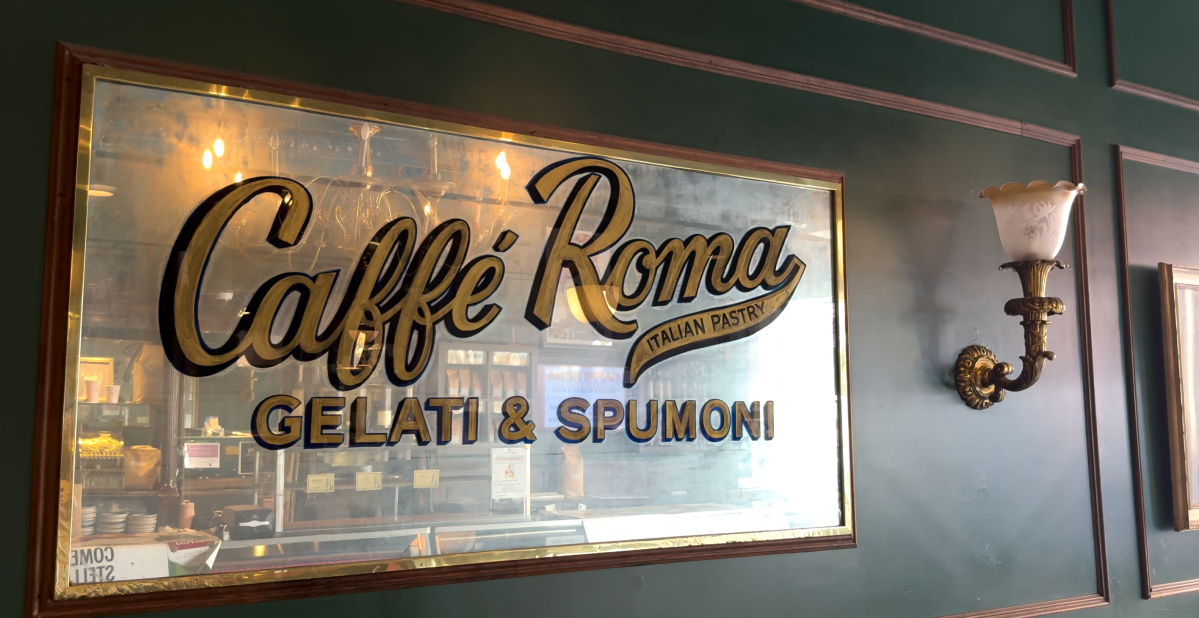
E Rossi & Co.
Before you buy a souvenir at one of those tables during the feast, make sure you pay a visit to one of the oldest shops in Little Italy. E. Rossi & Co. has been a staple in Little Italy since 1910 when it was opened by Ernesto Rossi. He came to New York in 1900 from Naples and opened his business, which sold Italian newspapers, books and magazines. Rossi quickly became one of the area’s main importers of Italian music and sold piano rolls, sheet music and records.
Not only would he sell music, Rossi found songwriters and singers and that led him to create his own music publishing company focusing on Neapolitan music.
While it has moved from its original location, it has been at its current spot for decades. It is still family owned and run by Ernesto’s grandson, Ernie. The Little Italy native continues the passion for music his grandfather had and even performs for some shoppers, including two songs he wrote for his late wife “Far’ L’Amore Con Te” and “The Other Side of Forever.”
The shop’s inventory has grown from music sheets to souvenirs, clothing, espresso cups and household items.



